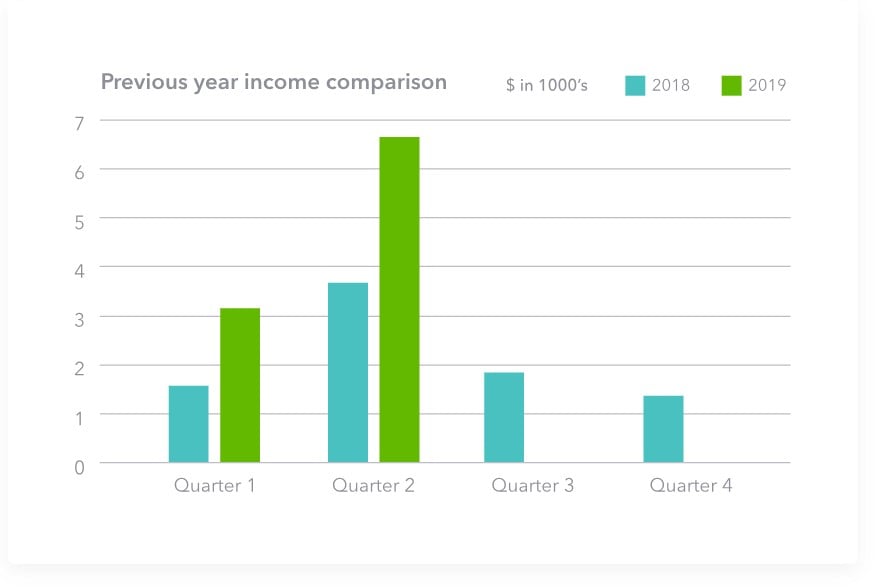The mountain of acronyms used in ecommerce marketing can make your head spin, but MER is one of the most important to understand.
Marketing efficiency ratio (MER) is known by many names—like marketing efficiency rating, media efficiency ratio, blended return on ad spend (ROAS), and ecosystem ROAS.
In marketing, what MER stands for is less important than understanding its impact and importance for long-term growth.
Marketing efficiency ratio describes how effectively your overall marketing efforts generate revenue. However, what you specifically measure as your “overall marketing efforts” is debatable and often varies by business.
Let’s talk about why MER is one of the greatest growth levers in your toolkit.
What Is MER?
So, what does marketing efficiency ratio mean from a practical standpoint?
MER describes how much revenue your ecommerce business earns for every dollar spent on marketing over a set period—such as over a month, quarter, or year. It shows the actual revenue impact of all your marketing efforts combined, making it a key metric for guiding strategies across platforms and maximizing the return on your marketing spend.
Ecommerce owners and analysts usually use MER to see how efficiently their biggest marketing spend—typically paid social and search ads—is performing. That’s also where we focus when measuring MER, so you can see the real impact of your advertising dollars.
How to Calculate MER
Calculating your marketing efficiency ratio is straightforward:
MER =
Total sales during the analysis period
÷
Total media spend during the analysis period
This is where you’ll see debate, as some would have you include expenses like salaries, contractor payments, and design costs in the denominator. However, you should measure that separately as marketing ROI, another impactful metric for the dashboard. Keeping MER separate from marketing ROI provides more insight into your performance.
How MER Works: Sample Calculation
MER is a ratio (sometimes expressed as a multiplier) that represents how much revenue every ad dollar spent has produced.
To see how MER calculations work, let’s look at a quick hypothetical:
- A brand decides to run an MER calculation for the last twelve months of media spend
- In the last twelve months, the brand has spent $100,000 total on Google (paid search) and Meta (paid social) efforts
- During that same period, the brand produced $500,000 in sales
Let’s plug these figures into the formula:
MER = Total sales during the analysis period ÷ total media spending during the analysis period
MER = $500,000 ÷ $100,000
MER = 5
So, this hypothetical brand’s ratio of sales to media spend is 5:1. In other words, every dollar spent in paid media generates five dollars in sales.
What’s a Good MER?
For ecommerce brands, a great all-up benchmark is 3.0 - 5.0. However, it varies by industry. A 3.0 might be closer to average for beauty and cosmetics, while a 5.0+ might be more normal for higher-margin products like fashion. It also heavily depends on your stage of growth, revenue, and media spend. But the trends over time are what help you most, which brings us to what you can do with MER.
Leveraging MER: Specific Action Items
Calculating your marketing efficiency ratio can help you:
- Adjust your business goals and budgets to improve ROI.
Your MER must likely exceed 3.0x to produce a positive ROI; if you generate $3 in revenue for every $1 spent on media, you might only be breaking even.
You should have it down cold where your percentage of revenue goes in terms of Cost of Goods Sold (COGS), variable selling costs, and fixed costs. Add MER in your profit goals, and you have the full picture.
Putting this data next to MER will give you an idea of where your balance should be. For example:
|
Revenue |
$500,000 |
||
|
COGS |
($175,000) |
35% |
Total = 92% Only leaves room for 8% profit |
|
Variable Selling Costs |
($60,000) |
12% |
|
|
Fixed Costs |
($125,000) |
25% |
|
|
Media Spend |
($100,000) |
20% |
|
|
Profit |
$40,000 |
8% |
|
|
MER |
5 |
|
With this data, you can set goals for how you want the percentage of your revenue to fall.
- Benchmark your efficiency against other brands.
MER is well-documented and benchmarked. You can easily compare your MER against other brands in your exact space and even target market. This will provide insights into your ability to compete with other brands in terms of advertising and customer acquisition. When comparing, ensure the comparison is using the same MER formula. - Identify trends.
You can now easily see over time if your overall efficiency for all your media spend is going up or down. Look at it in 6- and 12-month periods to account for seasonality.
If it’s going down, make sure it’s intentional, meaning you are pushing (experimenting, trying new channels, etc) or trying to maximize absolute revenue and profit to the point of diminishing returns.
If it’s going up, great job, you’re maximizing your returns. However, be sure to understand when it’s too high. A really high MER can indicate you are underspending and not maximizing your revenue and new customer potential. This is where you should dig deeper into ROAS and break-even models. - Identify inefficiencies in your overall marketing budget.
Imagine you discover that your advertising efforts over the last quarter have only produced a 2x ratio ($2 generated for every dollar spent). This discovery should prompt you to rethink your entire media and marketing budgets. - Enhance customer acquisition and retention strategies.
If you have specific numbers on marketing spend and revenue generation geared toward customer retention (existing business) and acquisition (new business), you can use these metrics to calculate your respective MERs for both. This can help you better determine where to focus your media budgets. See aMER below.
Setting Ideal MER Targets and Defining a Suitable MER
Like any other marketing metric, you should consider setting a goal for your ideal MER performance and tweaking your resource allocation until you achieve that goal. But it’s important to set a MER goal that makes the most sense for your business goals.
If your ecommerce store just launched or you’re making significant investments in marketing for the first time, set meaningful goals for your future. Your main focus for the first few months (and potentially the first year) of your campaigns should be maximizing revenue and customers—so long as you have enough profit to keep fueling the business.
Using the MER calculation early and often in your marketing efforts provides you with actionable insights you can use to make adjustments until you’re producing a positive ROI.
Once you achieve profitability, you can zoom in on customer acquisition by using the aMER formula—specifically focused on customer acquisition:
aMER = Revenue generated from new customer sales ÷ Total media spend
Lifetime Customer Value Optimizations
You might also consider optimizing your aMER formula to include customer lifetime value (LTV). You can determine LTV for individual customers, segments of your customer base, or your entire customer base. The formula is simple:
LTV = Average transaction size x Retention period x Number of transactions
Let’s say you wanted to examine the LTV of your customers aged 18-25 and that, on average:
- Purchases in this segment are $25
- The average customer stays engaged with your brand for one year
- The average customer makes four purchases during that year
LTV = $25 x 1 year x 4 purchases
LTV for 18-25 segment = $100
So, for the entirety of their relationship with your brand, a customer in the 18-25 segment spends $100. To maximize MER and profitability, consider:
- Determining which segments produce the highest LTV
- Calculating your aMER for that specific segment
Strategies for Improving MER
If you’re looking to increase your MER (i.e., increase your return on marketing spend), consider the following strategies:
- Target the right audience – Use an aMER calculation optimized for LTV to find your most profitable segments and assess how your campaigns are performing in that segment.
- Refine your marketing channels and tactics – Tweak your resource allocation over time to learn which channels (e.g., Meta, Google, TikTok) and strategies (e.g., SEO, CRO) perform the best. Then, invest more heavily in the most efficient avenues.
- Test and optimize your marketing campaigns – A/B testing, for example, can help you predict how variations of a campaign will perform before launch.
Perhaps most importantly, remember to always monitor and analyze your MER metrics to continuously enhance your marketing efforts over time.
Optimize your MER Strategy with Human
Today’s brands can leverage marketing efficiency ratio calculations to optimize their marketing spend, find their most profitable segments, and continuously improve their marketing efforts.
While the MER calculation is relatively simple, the resulting analyses can be complex. If you’re looking for expert guidance on optimizing your marketing spending, we’ve got your back.
Human is a revenue growth firm that caters specifically to the needs of ecommerce entrepreneurs. When you partner with us, Human becomes an extension of your in-house team, and your success is our success.
If you’re ready to harness your growth potential, reach out to our team.
Frequently Asked Questions
What is the difference between MER and aMER?
Marketing efficiency ratio looks at all revenue against your total ad spend across channels. It answers, “How much revenue did every advertising dollar generate overall?” Acquisition MER (aMER) zooms in on new-customer revenue only, using the same formula but counting revenue from first-time buyers to show whether acquisition spending is paying off.
What is the difference between MER, ROAS, and Blended ROAS?
MER is an all-channel, all-revenue view: total sales divided by total media spend.
Return on ad spend (ROAS) is channel-level and attribution-based (e.g., Google Ads revenue divided by Google ad spend), so it’s great for tactical tuning.
Blended ROAS rolls all ad channels together. Functionally, it offers the same view as MER, showing total revenue over total ad spend without factoring in per-platform attribution.
Use MER/Blended ROAS for the big picture and ROAS to optimize individual channels.
How often should I track my MER?
Check it frequently, but judge it over longer windows so seasonality doesn’t mislead you. A simple cadence is weekly monitoring with 6- and 12-month trend views to see if efficiency is improving or slipping. If MER swings sharply, confirm whether it’s intentional (e.g., testing a new channel) before reacting. For a complete scorecard approach, pair MER with a short list of ecommerce performance indicators.
Is MER meaningful for startups or subscription models?
Yes—with context. Early-stage brands can use MER early and often to guide spend while they work toward profitability. Once profitable, add aMER to focus on the efficiency of new customer growth. Subscription businesses should tie MER/aMER to lifetime value (LTV) so decisions reflect the revenue customers generate over time, not just the first purchase.
What does a good MER look like?
Benchmarks vary by model and margins, but many ecommerce brands aim for 3.0–5.0 as a healthy range. Treat this as a starting point, then track trends and adjust spend accordingly.



